Research - Reproductive investigations
In the Charleston Harbor system, diamondback terrapins populations have been monitored since 1995 through the use of a monthly trammel net survey, since which time a general decline in the relative abundance of terrapins has been noted in most areas.15 However, until recently, temporal comparisons of reproductive output of diamondback terrapins in the Charleston area were not available. Therefore, as part of a study to identify the viability of responsible stock enhancement of diamondback terrapins as a valuable management tool for sustaining and recovering terrapin populations, key reproductive biology parameters were also evaluated to facilitate comparison with historical data collected in the Charleston Harbor system.18 This historical comparison was initiated in 2014, and female terrapins were captured with trammel nets in the water or by hand on land during the nesting season (May – July).
All female terrapins were measured; their scutes marked with a unique alphabetical code for identification; and palpated and/or subjected to ultrasound examination to check for the presence of follicles and/or eggs. Females without eggs or follicles were released at the site of capture; however, females with follicles/eggs were held in one of two flow-through tank systems that included water and basking habitat (a). When females were determined to have shelled eggs, they were held in a tank system that offered "land" for them to nest in if they chose to do so (b).
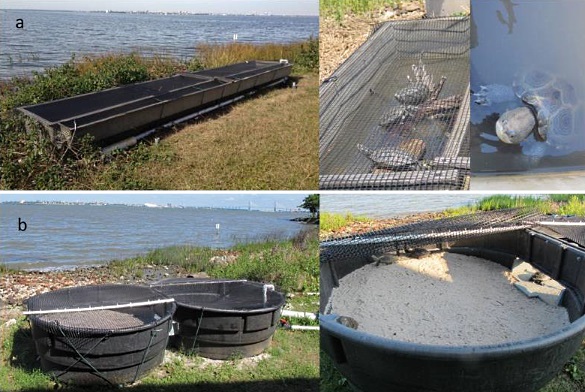
When females were observed to have only semi-rigid eggs, they were injected with oxytocin and placed in plastic bins of water to protect their eggs from being trampled. These females were monitored continuously until the eggs were deposited safely in the water, after which the eggs were immediately collected and placed in commercially produced reptile incubation substrate for all incubation experiments. The protected eggs were then placed in either a male producing or female producing incubator until the eggs hatched typically 45 to 60 days later.
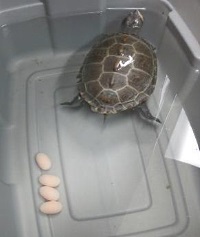
Hatchlings were measured immediately upon hatching as well as re-measured at monthly intervals thereafter. During their first year of life, hatchling terrapins were maintained in indoor tanks with low salinity water (5-10 ppt) and aquatic vegetation where they were fed a combination of commercially produced turtle food and a natural diet (crabs, snails fish).
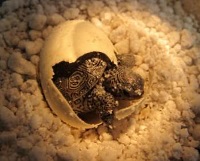
When compared to a study of diamondback terrapin reproduction on Kiawah Island,43 results obtained during 2014 and 2015 indicate no significant difference in body size, as measured by the plastron length of gravid female terrapins as well as no significant difference in the number of eggs laid per female or hatchling size.
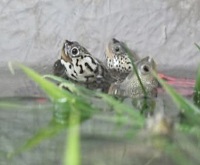
However, neither study assessed total nests laid by diamondback terrapins each year, which as indicated earlier is extremely important but also extremely difficult data to gather. As such, similar to the volunteer network that assist the SCDNR with annual counts of sea turtle nests, future monitoring of diamondback terrapin nesting throughout SC will also rely heavily on citizen-scientist reporting.
Although there appears to be a downward trend of diamondback terrapins captured in the monthly trammel net survey conducted coast-wide in SC15, at least near Charleston, SC, this trend does not appear to be linked to a decrease in female size or fecundity. Due to the longevity of the species and the slow time to reach sexual maturity, it may take years to capture population trends, therefore long-term monitoring such as the Inshore Fisheries survey is extremely valuable.
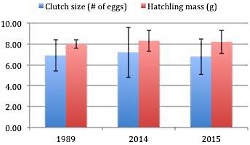
Future reproductive research areas hope to also focus on hatching success and hatchling health, which may be impaired due to development near marsh habitats and climate change. As such, future research will characterize and manipulate a suite of habitat characteristics that are needed for successful nests as well as to assess potential effects of development and climate change.
